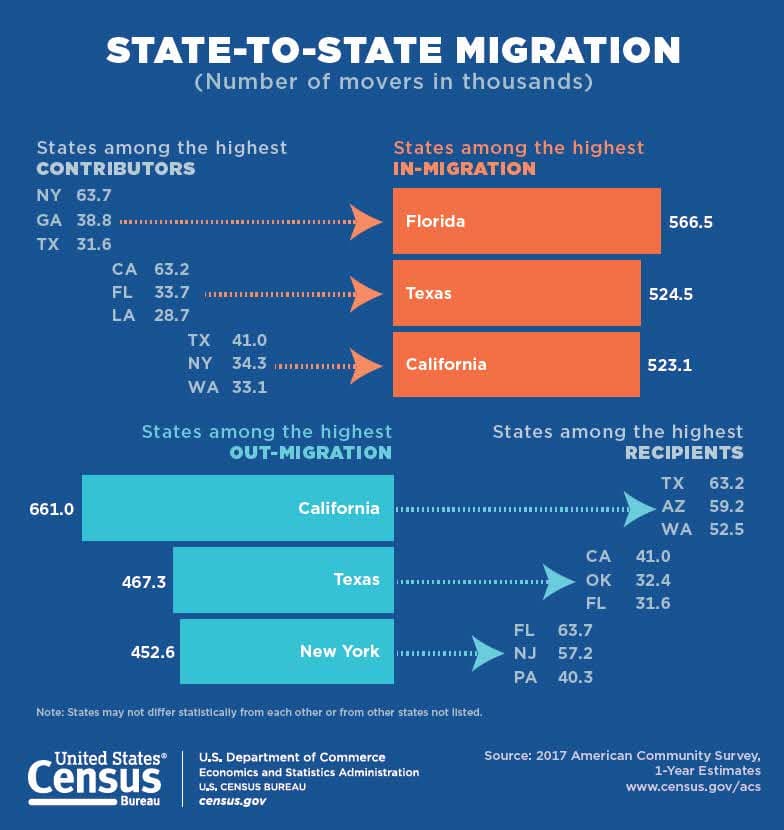Florida and Texas Lead U.S. State Migration Gains with Over 1.5 Million Combined Net Migrants Each (2020-2024)

New data on U.S. state migration patterns between April 2020 and July 2024 reveals a significant demographic shift, with Florida and Texas emerging as the primary beneficiaries of population growth. During this period, both states recorded net combined migration figures exceeding 1.5 million people, driven by strong domestic and international inflows, according to U.S. Census Bureau data. Conversely, New York and California experienced substantial domestic out-migration, which international arrivals only partially offset, leading to overall population losses from migration.
Florida led all states with a total net combined migration of 1,931,865 people, followed closely by Texas with 1,568,491 net migrants between April 2020 and July 2024. These gains were propelled by strong domestic migration, with Florida attracting 872,722 U.S. residents and Texas gaining 747,730 from other states. Both states also saw significant international migration, with Florida adding over 1 million and Texas over 800,000 international residents, reflecting a broader trend of population movement towards Sun Belt states.
In contrast, New York and California registered the largest domestic migration losses in the nation during the same timeframe. California saw a net outflow of 1,234,030 domestic residents, while New York lost 966,209. Although both states received substantial international migration—California with 934,230 and New York with 519,395—these inflows were insufficient to counteract the domestic departures, resulting in overall net combined migration losses of 530,886 for California and 446,814 for New York.
The period from 2020 to 2024 encompassed the COVID-19 pandemic and its aftermath, which significantly influenced migration trends. The U.S. Census Bureau noted a substantial increase in net international migration during these years, particularly from July 2021 to June 2024, driven by factors such as the reversal of pandemic-era travel restrictions and a rise in humanitarian migrants. This surge in international arrivals played a critical role in shaping the overall migration landscape for many states.
These migration patterns underscore ongoing demographic shifts in the United States, with implications for state economies, housing markets, and political representation. The continued appeal of states like Florida and Texas, often attributed to factors such as lower cost of living, favorable business climates, and warmer weather, contrasts with the challenges faced by high-cost states like New York and California in retaining their domestic populations.